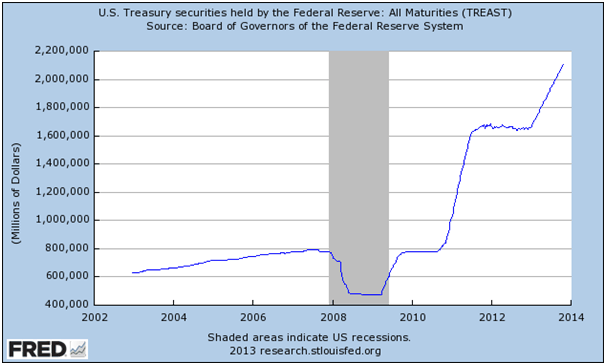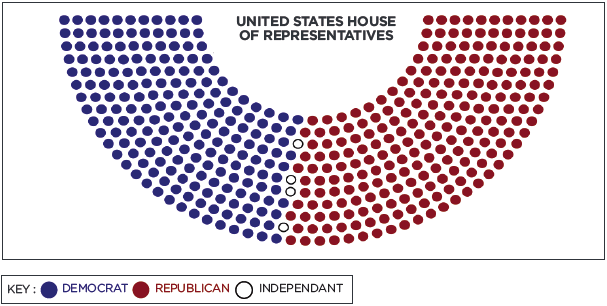A Step Closer to Oblivion?
Nov 3, 2013 at 12:27 pm in Fundamental Analysis by Dave
October has a bad reputation among investors and traders. It is the financial calendar’s ‘witching’ month. Although the statistics of historical stock market performance don’t support the existence of the dreaded ‘October Effect’, the great crashes of 1907, 1929 and 1987 have left deep cultural scars. October is meant to be the month when all that can go wrong will go wrong.
Taken at face value, this October was pretty good. The price action continued to confound the bears with the S&P500 breaking out to yet more new all-time highs. The catalyst for this was the US avoiding crashing through its self-imposed debt ceiling and an ensuing unprecedented debt default. The shutdown in fact proved temporary and economic data pointed to continued recovery, albeit somewhat moribund. As the month draws to an end, September’s ‘taper tantrum’ is but a distant memory.
So, as we enter November, you’d be forgiven for feeling that all is well with the world and we are through the worst of the crisis. However, as we should all be acutely aware of in this QE-manipulated world of ours, ‘face value’ is an increasingly treacherous commodity…
In spite of nominal prices reaching new peaks, October 2013 has otherwise been a disaster for anyone with a serious interest in the long term financial health of the global economy.
So why is the tone of this piece so pessimistic, when most other commentary is encouraged by the apparent green shoots of recovery?
The answer is both simple and complex.
The simple answer is that October 2013 marked the point at which America’s leaders told the world there is no plan for resolving the country’s debt crisis. Naturally, they didn’t officially announce this, but thanks to October’s inaction they might as well have done. What has to be clear to everyone now is that the politicians have neither the willpower nor motivation to reform government spending and the Federal Reserve lacks either the courage or the conviction to bring to an end its extraordinary stimulus measures.
America’s political elite has failed. There is no Plan B.
The US authorities seeming only plan is that somehow the looming debt crisis can be resolved through more debt! Worse still, this debt isn’t even bona fide debt as you or I would normally understand it. Instead the debt the US Treasury now issues is wholly reliant on the $45 billion a month of Treasuries that the Fed purchases through its open markets operation. Otherwise known as ‘deficit monetisation’ this process has many harmful consequences, but the biggest flaw it can never address is that there is just not enough genuine demand for American public debt.
If this sounds perverse it is because it is. The historical precedents for when governments have had to resort to printing operations to sustain spending have universally ended in calamity.
The Numbers behind the Mess
The table below shows how America’s federal debt grew over 2013:
As of October 1st 2013 the Federal Reserve had bought $405 bn of Treasuries this year; in other words, $90.2 bn more Treasuries than the US Treasury issued in the same period.
The total amounts should be familiar to anyone who has followed the debt ceiling debacle. However, the significant number is the amount US borrowing has grown by – $314.8bn.
Now, take a look at the Fed’s purchases of Treasuries over the same period:
The top line of this chart might appear slightly less familiar to followers of QE. The headline figure of the Fed’s bond purchasing programme is $85bn a month, however of this $45 bn is dedicated to buying US Treasuries. US Treasuries are the debt instrument the US government uses to borrow money. (As an aside the remaining $40bn a month of Fed purchases is on Mortgage Backed Securities, but more about these in future issues).
As of October 1st 2013 the Federal Reserve had bought $405bn of Treasuries this year; in other words, $90.2 bn more Treasuries than the US Treasury issued in the same period.
As mentioned, the technical term for the process of creating money to fund excess expenditure is called ‘deficit monetisation’. If you haven’t heard of this phrase before, expect to hear much, much more of it over 2014. It spells serious trouble.
Thanks to its interventions in the market, the Federal Reserve now owns $2.1 trillion (yes that’s right, trillion!!!!) of US Treasuries:
So, the Federal Reserve owns 1/8 of all the debt issued by the US Government. And this proportion is growing rapidly. If this doesn’t indicate a system that is fundamentally broken, we don’t know what does.
And yet the Fed keeps on buying
The obvious question to ask about all this is ‘why on Earth is the Fed still pressing ahead with its full Quantitative Easing programme?’
The deeply unpalatable answer for policy makers is that they have no choice.
As a direct result of all the policy missteps in the last 5 years, the members of the Federal Open Markets Committee know all too well that if they cease Quantitative Easing, this will bring the whole house of cards crashing down. That this is inevitable isn’t the issue. Instead, the issue is who gets blamed for this and, let’s be honest, who in their right mind would want to be held accountable for what could be the greatest financial crash of all time?
Sounds dramatic?
Possibly, but just look at the numbers above again. There is no arguing with them. They are published facts. We were told to expect a tapering of QE by the end of 2013. Even this looks off the agenda now, but what most market commentators missed is that a tapering is just that; a reduction. It is not a cessation. The Fed could taper its buying of Treasuries by $10bn a month and would still be buying more than the US Government issues, based on their current borrowing requirements. Deficit monetisation is here to stay.
Doing away with the debt ceiling
So, if we can’t look to the Fed for our salvation, perhaps America’s politicians will lead the way?
Pah! Not a bit of it!
October 2013 also marked the latest (and possibly most fatal) round of squabbling in the debt ceiling debacle.
A misguided, yet widely reported assumption, in response to October’s debt ceiling ‘deal’, is that the row is set to reignite in February when the next limit is forecast to be breached. There are two reasons this should prove to be incorrect.
The first reason is because it is highly unlikely the Republicans will have the desire to subject themselves to another mauling. Not only did they suffer a humiliating defeat in October’s vote, in which they failed to win a single concession on Obamacare, they also have been roundly blamed for taking America to the brink once more, according to the polls.
Even though the American voting public doesn’t seem to understand that America is on the brink, irrespective of Republican intransigence, just like the Federal Reserve, the Republican Party does not want to shoulder the responsibility of causing the final crash. With Congressional mid-term elections due in November 2014, it is hard to see the party gambling on repeating its ‘success’ of summer 2011 (even though that ‘success’ did nothing to alleviate the root causes of federal overspending).
As compelling as the first reason is for there being no repeat of the debt ceiling row in February, the second explanation is possibly more powerful and relates to the specific details of October’s ‘deal’. The bill that was passed by Congress and the Senate to avert an American default was called ‘H.R. 2775 – Continuing Appropriations Act, 2014’. If you want to read the fine detail of what was agreed, it is freely available through the Congressional Library (www.congress.gov).
The most relevant section of this Act can be found towards the end of the text.
Section 1002, otherwise known as the ‘Default Prevention Act of 2013’, specifies the mechanism through which the Federal Government was permitted to extend its borrowing. It also states how the debt ceiling may be raised in future.
In short, when federal borrowing next approaches the debt ceiling (as is surely inevitable) President Obama is authorised to raise the limit (which is also inevitable). Should Congress or the Senate object to this increase of the debt ceiling then either house can prevent it by issuing a ‘joint resolution’.
This is the tricky part.
Under the rules of the American legislative process, joint resolutions require a two thirds majority to be passed. Currently the Democrats control 200 of the 435 seats in Congress and 54 of the 100 seats in the Senate (including two Democrat aligned independents). To stop Obama raising the debt ceiling in February either 56 Democrat Congressional Representatives or 16 Democrat Senators will need to switch sides and vote with the Republicans. This is even assuming that all the Republicans would support such a measure, which seems highly unlikely, as explained above.
Although the debt ceiling still officially exists, to all intents and purposes it is now at Obama’s sole discretion whether or not to raise it.
The significance of this procedural technicality should not be underestimated. Although the debt ceiling still officially exists, to all intents and purposes it is now at Obama’s sole discretion whether or not to raise it. Given that his Presidency has been characterised by a dramatic expansion in federal spending rather than urgently needed reform, this spells trouble for anyone hoping for a managed resolution to America’s debt crisis.
So what can be done?
Unfortunately the answer to this question is another flippant, trite one. Nothing can be done. It is quite simply too late.
The fiscal problems in America have been building for nearly two decades. They are also much larger than the official debt numbers suggest. There isn’t the space here to write about the estimated $86.8 trillion (yes, that’s trillion!) the US Government is responsible for in unfunded liabilities. We will write more about these in this month’s blog, but suffice to say for now that current federal spending in America is set to continue increasing indefinitely.
As long as the Federal Reserve maintains its bond purchasing programme and the market continues to accept this deficit monetisation, stocks and all other financial assets should continue to rise. Much more worryingly, however, this also continues to remove any pressure on the political system to engage in serious reform. The longer this happens, the worse the final outcome will be. At some point the market will no longer accept this charade and, if history is anything to go by, this will happen very suddenly.
And if you think this will just be America’s problem, well guess again. An American default will change the world. Any assumptions we might have about our economic existence will be shattered. All bets will most definitely be off. After what we’ve seen this month just past, we are all several steps closer to this increasingly inevitable reckoning. The only true safe have will likely be physical gold.
Article reproduced from the November 2013 edition of Spread Betting eMagazine





